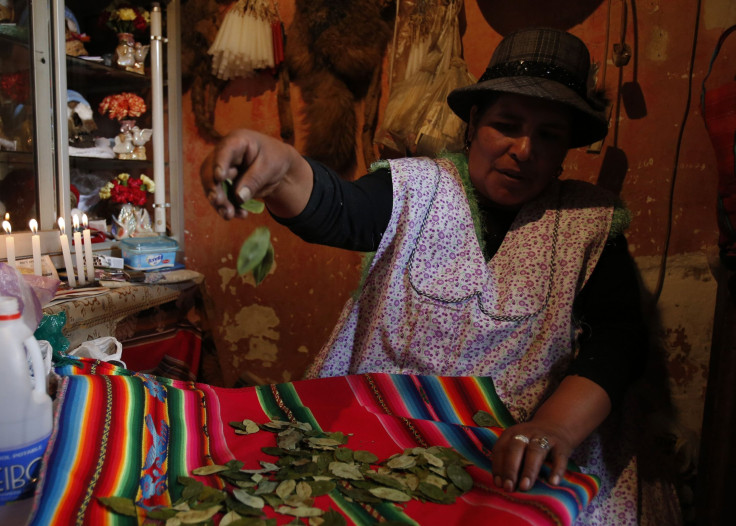Bolivia's Coca Crops Surpass Legitimate Demand Needs; EU Fears Excess Cultivation For Cocaine Production

Bolivia is growing more coca leaves, the raw ingredient for the illegal drug cocaine, than it consumes or even needs, according to a study funded by the European Union in cooperation with the La Paz government.
"Demand [for coca leaves] is estimated at 20,690 tons annually, and the required area [to cultivate this amount] is 14,705 hectares (36,337 acres)," Rodolfo Machaca, the leader of a coca growers union, told reporters after the study was presented, reported Agence France-Presse.
But according to the United Nations Office on Drugs and Crime, in 2012 Bolivia had 25,300 hectares of coca plants under cultivation -- more than double the 12,000 hectares that the government authorized for coca production in the 1980s, and far more than domestic demand would suggest. (Still, that 25,300-hectare figure is down from 27,700 in 2011).
Bolivians have a long tradition of chewing coca leaves. According to the EU report, more than 3 million Bolivian regularly chew coca and at least 40 percent of them consume coca for what is locally called “pijcheo” (keeping chewed coca leaves in the mouth as a way to fight altitude sickness and fatigue). The other 60 percent of coca consumption involves its use in medicinal drinks, rituals and social conventions, like offering them to a visitor as a sign of welcome. Moreover, the overwhelming majority of coca consumers (78 percent) are men.
But the EU and other officials fear that the excess cultivation is designed not for such benign and traditional uses, but rather for cocaine production -- which is an important source of income for Bolivia’s rural poor, and, of course, wildly lucrative in illegal drug markets worldwide. This is a reality that has not been denied by the Bolivian government, whose leader, President Evo Morales, came to power as leader of the national coca growers union.
According to the Associated Press, Bolivian drug exports are increasing, with Brazil, Argentina and the EU as their primary target markets. Minister of Government Carlos Romero said at a news conference that the conclusions of the EU study are not necessarily binding, but the government will use it as a base to draft a bill establishing the 12,000 hectares limit as the maximum allowed for coca cultivation in the country. (Interestingly, Bolivian opposition lawmakers claim only 6,000 hectares are needed to grow coca for legal uses).
“Any study done [on] this subject is obviously a technical opinion, but obviously it does not have a binding effect,” Romero explained.
And even if the EU study is not considered binding, the Morales government has assured it will monitor the crops in the country.
Indeed, the government routinely dismantles coca crops deemed illegal or designed for illegitimate purposes, sometimes with tragic results. Last October, one such state intervention in Miraflores, on the outskirts of La Paz, turned violent, leaving three soldiers and a doctor dead in a confrontation pitting the Bolivian police and security forces against coca farmers.
Morales, who took over as president in January 2006, remains in his position as boss of a coca growers union, suggesting he in ensnared in a conflict of interest. In addition, his principal constituency is the Chapare region, a prime area for coca farming.
AFP also reported that although the Bolivian government commenced a $50 million plan to cut domestic demand for the coca leaves between 2013 and 2017, it nonetheless wants to increase exports of the stimulant.
Bolivia is the world’s third biggest coca producer, behind neighbors Peru and Brazil. The UN noted that more than 40,000 Bolivians make their living on coca cultivation, which contributes 1.5 percent to national GDP.
© Copyright IBTimes 2025. All rights reserved.





















